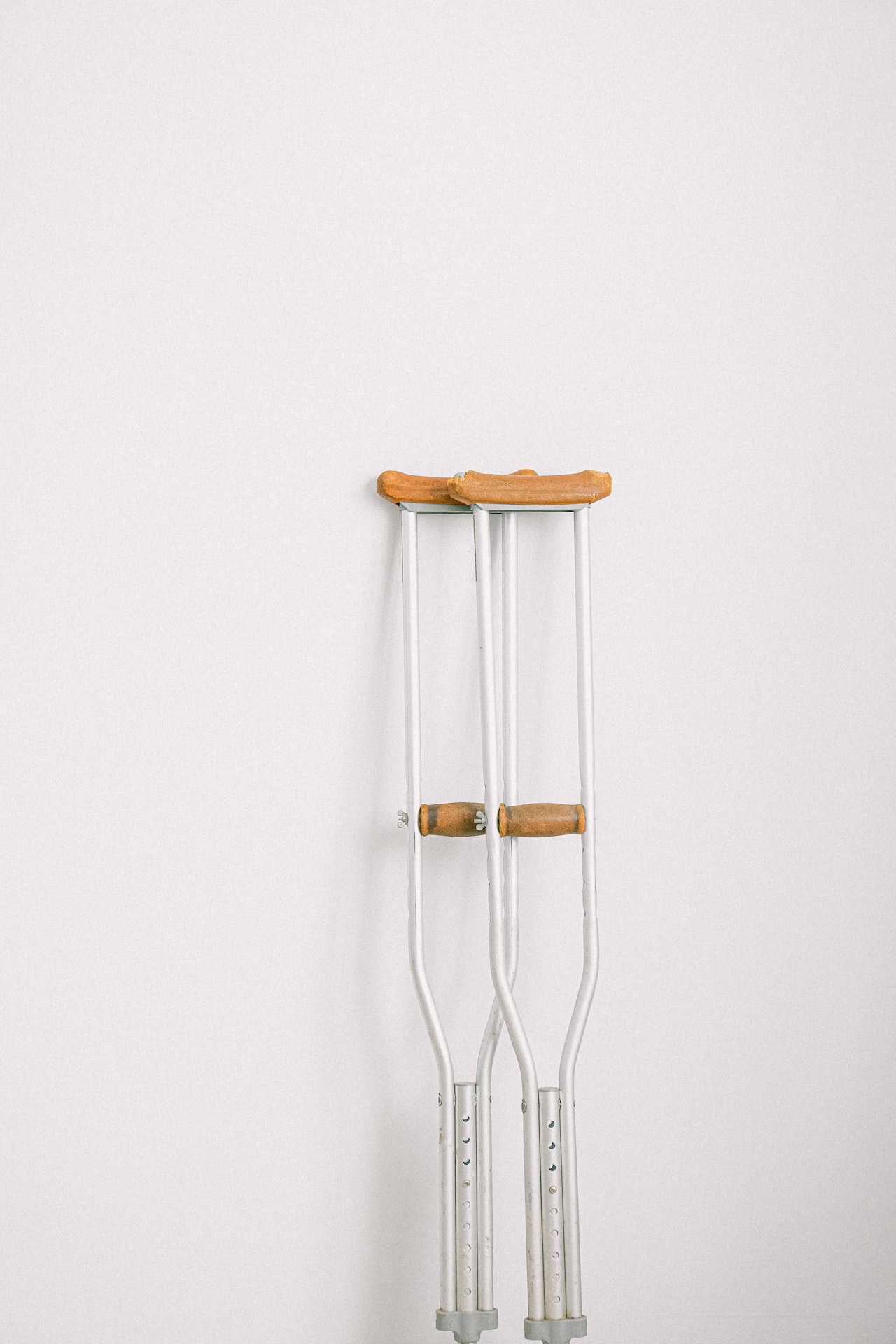Mountain biking is an activity that many people engage in, whether for leisure or competition. Unfortunately, with any physical activity comes the risk of injury. For those serious about mountain biking, an injury can be brutal to recover if it is severe enough. So, if you’re dealing with a serious injury from mountain biking, don’t despair. This article will provide tips for successfully recovering from a severe mountain biking injury.
What is a Mountain Biking Injury?
Mountain biking is an extreme sport that can lead to severe injuries. Common mountain bike injuries include bruises, sprains, strains, cuts, and fractures. Typical body areas prone to damage from mountain biking include the knees, wrists, elbows, shoulders, head, and neck. The most severe mountain biking injuries require medical care and long-term rehabilitation.
Preventing Mountain Biking Injuries
Mountain biking injuries can be prevented by wearing the proper protective gear, including a helmet, knee and elbow pads, and gloves. Additionally, taking the time to properly warm up and stretch before engaging in a mountain biking session is an excellent way to reduce the risk of injury.
Treating Mountain Biking Injuries
You must receive prompt and proper treatment if you are unfortunate enough to suffer a mountain biking injury. Depending on the severity of the injury, this may mean treating the damage yourself with simple first aid or seeking the help of a professional medical provider. Severe injuries may require surgery or rehabilitation.
Benefits of Recovering from a Mountain Biking Injury
Recovering from a mountain biking injury can have many benefits for an athlete. Proper rehabilitation can restore strength and flexibility, helping the athlete to return to the sport safely and at peak performance. Additionally, recovery from a mountain biking injury is an opportunity for an athlete to gain increased knowledge about the sport, their body, and the mechanics at play. Finally, recovering from a mountain biking injury can improve an athlete’s mental toughness, allowing them to remain resilient in the face of adversity.
Types of Injuries
Mountain biking is a thrilling and potentially dangerous sport. Before taking on a challenging trail, it pays to understand the various injuries that can occur and how best to prevent them. Knowing what to look for can be critical to a quick recovery from a severe mountain biking injury.
Common Mountain Biking Injuries
A broken bone or joint is one of the most common mountain biking-related injuries. This can occur from a fall or a collision with another rider, resulting in intense pain and swelling. If the joint is severely damaged, surgical intervention may be required to repair it.
Other common injuries among mountain bikers include traumatic brain injuries, spinal cord injuries, and fractures. Depending on the severity of the damage and the part of the body affected, these can be life-altering and require extensive rehabilitation.
Preventing Injuries
Some injuries can be prevented by taking the appropriate safety precautions. Keeping the bike and components in good condition and properly maintained can reduce the risk of equipment failure. It is also a good idea to wear a helmet and protective gear and to understand the trails and obstacles before setting out.
When to Seek Medical Attention
It is essential to seek medical attention immediately if a mountain biking injury is suspected. Even a minor-seeming injury can be more serious than it appears. Some signs that medical attention is necessary to include severe pain, paralysis, numbness, lack of movement, or a change in skin color.
Recovery Tips
Recovery from a severe mountain biking injury is often long and challenging. It is essential to follow the doctor’s instructions and to take all prescribed medications as directed. Resting, icing, and elevating the injured limb may also help to reduce pain and swelling.
For those with a more severe injury, physical therapy may be needed. This can help to rebuild strength and muscle and restore range of motion. Professional counseling may also benefit those dealing with a severe injury’s emotional effects.
Risk Factors
Serious mountain biking injuries can range from broken bones to head and neck injuries to ligament and tendon damage. It is essential to understand the injuries sustained to develop an effective recovery plan. Rest and supportive measures may be enough for a minor strain, while more severe damage may require comprehensive rehabilitation. An assessment from a doctor or physiotherapist will help you determine the best treatment plan for your injury.
Develop a Recovery Plan
Developing a recovery plan is vital for returning to mountain biking and minimizing re-injury risk. For example, suppose the injury is a muscle strain. In that case, the recovery plan should include rest, exercises to strengthen the injured area, stretching, and, eventually, a return to mountain biking. A doctor or physiotherapist can guide the intensity and duration of your recovery plan.
Follow Your Plan Closely
Once a recovery plan has been developed, it is vital to adhere to it closely. For example, if your program specifies rest for some time, it is essential to comply with the period of rest recommended by your doctor or physiotherapist. Failing to do so can lead to further injury and additional time spent away from your bike.
Minimize Injury Risk
To reduce the risk of future mountain biking injuries, it is vital to minimize the risk. These steps include wearing protective gear, such as a helmet and knee and elbow pads, and adhering to proper mountain biking techniques. Additionally, warm up before each ride and adequately maintain your mountain bike to minimize the risk of a severe injury.
Signs and Symptoms
Mountain biking can be extreme, and injuries can occur even with the best safety measures in place. Common injuries that can occur include fractures, sprains and strains, dislocations, and concussions.
Diagnosing a Mountain Biking Injury
If you experience pain or any other potential symptoms after a mountain biking fall, it is crucial to seek medical attention as soon as possible. A doctor can diagnose the injury’s severity and develop an appropriate plan or treatment, depending on the extent of the damage.
Recognizing Signs and Symptoms of a Serious Injury
If you experience any of the following signs and symptoms after a mountain biking fall, it is likely that you have a serious injury and should seek medical help immediately:
- Unrelenting pain
- Swelling or bruises that worsen
- Tingling or numbness in the extremities
- Loss of motion or abnormal movement
- Distorted vision or headache
- Severe dizziness or lightheadedness
- Loss of consciousness
Treating a Serious Mountain Biking Injury
Once the injury has been diagnosed, the doctor will determine the best course of treatment. Depending on the severity of the injury, treatment may include rest, medication, physical therapy, or surgery.
Recovery from a Serious Mountain Biking Injury
Recovering from a severe mountain biking injury usually involves resting and caring for the damage. Depending on the specific injury and treatment plan, recovery time can vary. It is essential to follow your doctor’s instructions for the best outcome. This may include following a physical therapy program, taking medications as prescribed, and following any other instructions given.
Tips for Recovering from a Mountain Biking Injury
Once you have been cleared to start engaging in light activities again, it is essential to follow some tips to help safely and effectively recover from a mountain biking injury.
- Start slowly. Begin with low-impact activities and gradually increase the intensity as your doctor or physical therapist recommends.
- Listen to your body. If you experience pain or other symptoms, stop and rest.
- Incorporate strength training. Building up muscle strength can help protect the injury.
- Avoid rushing. Allow yourself plenty of time to recover from the injury before attempting more intense activities.
Recovering from a severe mountain biking injury can be slow and challenging. However, following the recommendations of your doctor and physical therapist, as well as taking the necessary precautions, can help to ensure a successful recovery.
Diagnosis
Mountain biking injuries can range from minor scrapes and bruises to more severe injuries such as fractures, dislocated bones, and ligament tears. To diagnose a mountain biking injury, an emergency care doctor or orthopedic specialist typically begins by taking a complete medical history, performing a physical exam, and ordering an X-ray, MRI, or ultrasound to evaluate the extent of the injury.
Examining the Severity of the Injury
In severe cases of mountain biking injury, further evaluation may be necessary to determine the severity of the damage. This may include testing for nerve and muscle damage and assessing the extent of joint and tendon damage. A CT scan or an arthroscopy may also be ordered to assess the damage further.
Locating the Source of the Pain
To accurately diagnose a mountain biking injury, the doctor must first determine the precise source of the pain. In some cases, the source of the pain may be obvious, while in others, it may require further testing to pinpoint the specific area of injury. Familiar sources of pain in mountain biking injuries include the shoulder, elbow, wrist, hip, knee, or ankle joints and any areas along the spine.
Sorting out the Diagnosis
Once the source of the pain is determined, the doctor can make a specific diagnosis. Depending on the location and severity of the injury, the diagnosis may involve a range of treatments, from simple rest and ice therapy to more complex surgeries and long-term rehab. The type of treatment prescribed will depend upon the severity of the injury and may include immobilization, physical therapy, medications, or surgical intervention.
Follow-up Care After Mountain Biking Injury Diagnosis
Follow-up care is essential after receiving a diagnosis of a mountain biking injury. During the follow-up appointment, the doctor will evaluate the damage and discuss any ongoing concerns with the patient. In addition, the doctor may also offer advice on how to manage any lingering pain, as well as how to prevent future injuries. Additionally, the doctor may recommend additional rehabilitation programs and exercise plans to ensure a successful recovery from a mountain biking injury.
Treatment
The most important element of recovering from a severe mountain biking injury is to allow your body to rest and heal. Depending on the severity of the injury, the doctor may advise the patient to take a break from the sport for a few weeks or months. Resting allows the body to focus its resources on repairing any damaged tissue and will help to prevent further injury.
Stretching and Strengthening Exercises
Following the initial rest period, it is essential to begin gentle stretching and to strengthen exercises to restore muscle strength and flexibility. Strengthening exercises help to restore lost muscle power, which can be necessary for returning to the sport and participating in more extreme mountain biking activities.
Physical Therapy for Mountain Biking Injuries
Physical therapy can be highly beneficial for recovering from a severe mountain biking injury. Physical therapy focuses on restoring the range of motion and strength. A physical therapist will typically provide the patient with a personalized program of exercises designed to help improve flexibility and strength while minimizing the risk of additional injury.
Massage Therapy for Mountain Biking Injuries
Massage therapy can also aid in the recovery process by helping to improve circulation and reduce muscle soreness and stiffness. Massage therapy has also been known to enhance the range of motion, reduce inflammation and promote overall relaxation.
Injury Prevention
Injury prevention is an integral part of recovery from a mountain biking injury. This can include wearing protective gear such as helmets and other protective clothing, stretching before and after riding, and being aware of your physical limitations. Keeping the body in good physical condition can also reduce the risk of injury.
In conclusion, recovering from a severe mountain biking injury is a process that takes time and dedication. By taking the time to rest, perform physical and massage therapy, and practice proper injury prevention techniques, the patient can safely and effectively return to the sport.
Prevention of Mountain Biking Injuries
Before hitting the trails, it is vital to ensure you are prepared for the rigors of mountain biking. Equipment such as helmets and protective gear should be worn at all times. Additionally, checking your bike and ensuring it is mechanically sound and in good working order is essential. Make sure to bring along plenty of water and snacks, as proper hydration and nutrition will help keep your energy levels up throughout your ride.
Proper Warm-up and Cool-down
Before going out on a ride, it is recommended to do a proper warm-up routine. This will help prepare your body for the physical demands of mountain biking. After a ride, it is equally important to cool down and stretch to reduce the risk of injuries.
Protect Yourself
To further protect yourself while mountain biking, it is essential to always wear protective gear such as a helmet and protective eyewear. Additionally, it is vital to pay attention to the terrain and know your limits. Pushing yourself too hard can result in an injury.
Stay Informed
Mountain biking can be unpredictable, so it is crucial to stay informed about trail conditions and the difficulty level of the terrain. If something doesn’t feel right, don’t hesitate to turn around and take a different route.
Never Ride Alone
When mountain biking, riding with a group or a partner is always a good idea. This way, if you experience an injury, there will be someone around to help you. Furthermore, riding with a group can help ensure that you push yourself within your limits and stay safe.
The Value of Gradual Rehabilitation
When recovering from a severe mountain biking injury, taking it slow and steady is the best action. Gradually stretching and strengthening the injured muscles is essential to returning to full mobility while avoiding possible further damage or pain. Additionally, seeking professional medical assistance and advice can be invaluable in understanding your injury and providing guidance on increasing physical activity. While it may be frustrating not to be able to return to the trails as quickly as desired, a gradual rehabilitation process is the best way to ensure that the injury does not become a long-term issue. With patience and dedication, mountain bikers can look forward to a total and safe return to the sport they love.






Leave a reply